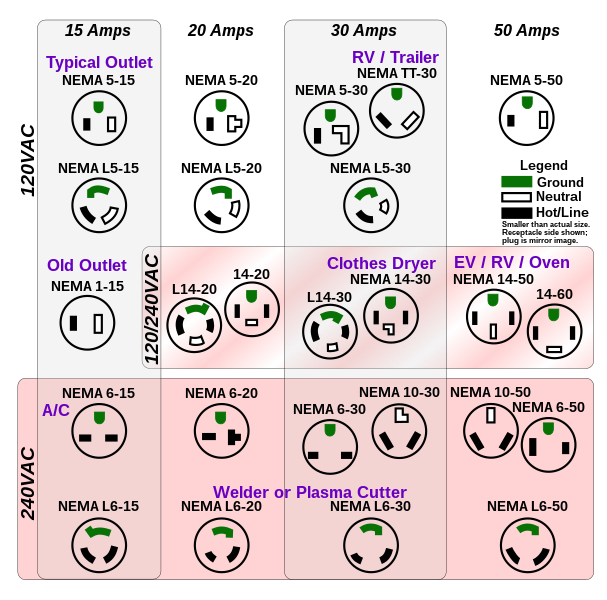Hi Everyone,
We were able to get a lease on a Nissan Leaf!! We've just gotten the cable back from EVSE Upgrade (1 day turn-around was great); however, I've run into a little snag.
Inside our house, attached to the same wall as the garage wall to the car, is a dryer/dryer outlet. I figured the easiest thing to do in order to get 240v 30amp to the garage would be simply to hook into the line. ... which isn't quite turning out the way I thought it would. Right now, I'm only getting 12amps from the L6-30 outlet according to the upgraded EVSE unit. Black to black, white to white, and grounder to grounder when I spliced into the wire. The dryer still runs just fine, and when I use a voltmeter it shows the black line to grounder as being 240v while the white to grounder is 120v (note: I am using a 35 year old voltmeter). This is true for the dryer outlet as well. Everything has a solid connection.
Any ideas?
Thanks in advance. I'm not sure what could be off here.
Edit: I used 10/2 wire. I did try using an insulated single wire for a grounder to see if that made a difference; however, it didn't seem to do anything to the amperage. So, I went back to using the non-insulated grounder in the 10/2 wire.
We were able to get a lease on a Nissan Leaf!! We've just gotten the cable back from EVSE Upgrade (1 day turn-around was great); however, I've run into a little snag.
Inside our house, attached to the same wall as the garage wall to the car, is a dryer/dryer outlet. I figured the easiest thing to do in order to get 240v 30amp to the garage would be simply to hook into the line. ... which isn't quite turning out the way I thought it would. Right now, I'm only getting 12amps from the L6-30 outlet according to the upgraded EVSE unit. Black to black, white to white, and grounder to grounder when I spliced into the wire. The dryer still runs just fine, and when I use a voltmeter it shows the black line to grounder as being 240v while the white to grounder is 120v (note: I am using a 35 year old voltmeter). This is true for the dryer outlet as well. Everything has a solid connection.
Any ideas?
Thanks in advance. I'm not sure what could be off here.
Edit: I used 10/2 wire. I did try using an insulated single wire for a grounder to see if that made a difference; however, it didn't seem to do anything to the amperage. So, I went back to using the non-insulated grounder in the 10/2 wire.




